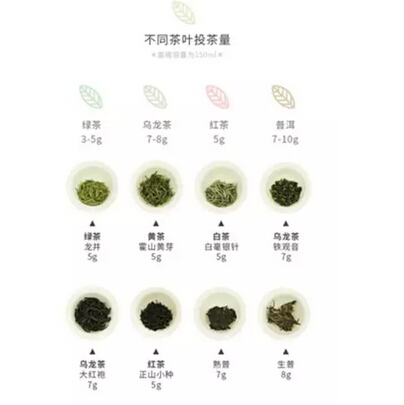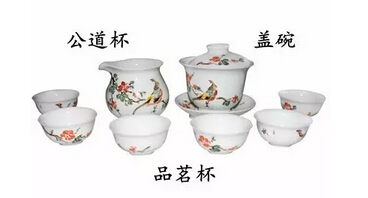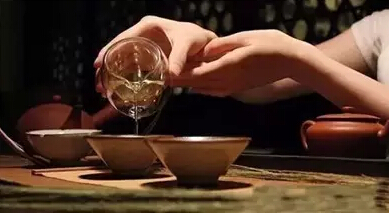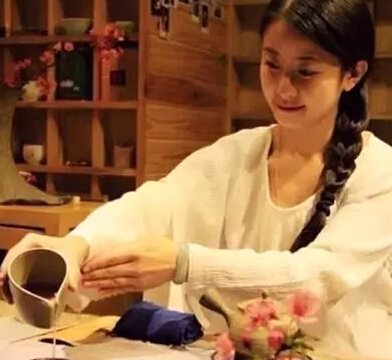Brewing tea is an elegant yet intricate process, with different teas requiring different brewing methods. For beginners, mastering these three simple steps can help you brew a cup of tea with excellent color, aroma, and taste.
Step one to becoming a tea brewing expert: Remember the three key elements of tea brewing

>>>>
Tea leaves quantity, water temperature, and brewing time
Tea leaves quantity
To brew a delicious cup of tea, it's essential to measure the right amount of tea leaves.
Water temperature
The water temperature for brewing tea depends on the type of tea.
Green tea generally should not be brewed with boiling water at 100°C; instead, use water at 80°C~90°C (let the water boil first, then cool to the desired temperature).
Oolong tea, on the other hand, requires boiling water.
Brewing time
The water temperature and the amount of tea leaves also affect the brewing time. Higher water temperature and more tea leaves require shorter brewing time, while lower temperature and fewer tea leaves require longer brewing time.
However, the most important factor is to suit the drinker's taste.
Step two to becoming a tea brewing expert: Prepare the three essential tea set items
>>>>
Lidded bowl (gaiwan), fairness cup, and tasting cups

Lidded bowl (gaiwan)
The shared vessel for tea leaves and water, where they blend and create the ever-changing tea soup.
Fairness cup
The vessel for the tea soup, ensuring even distribution.
Tasting cups
Used for sipping the tea soup.
Tip:
For brewing tea, it's recommended to use mountain spring water or mineral water. Avoid using tap water or distilled purified water if possible.
If tap water is your only option, let it sit for a day or open the lid when it's about to boil to release chlorine.
Step three to becoming a tea brewing expert: Remember the four-character mantra for tea brewing
>>>>
Heat, rinse, pour, and balance

Heat
Heat the cups: First for hygiene, second to raise the temperature of the utensils so the tea doesn't cool immediately when poured in.
Order: Lidded bowl -> fairness cup -> tasting cups -> water basin.
Add tea: The amount of tea leaves is the first step to successful brewing. Too many leaves won't unfold properly, and the tea soup's concentration and flavor won't fully develop, resulting in an incomplete taste. Too few leaves can be compensated by extending the brewing time, but this reduces the number of infusions.
Smell the aroma: First to experience the tea's fragrance, second to detect any off-flavors. If there are off-flavors, rinse the tea more vigorously.
Rinse
Rinse the tea: Besides hygiene, tea leaves lose much of their quality and vitality during long-term transportation and storage. Rinsing with hot water awakens the leaves, helping them unfold.
This allows the substances in the leaves to infuse faster. Rinsing must be quick; soaking for too long will extract too many substances, which is counterproductive.
For teas with floating off-flavors, rinse more vigorously to remove the unwanted smells. When rinsing, pour water evenly along the inner wall of the lidded bowl, moving the kettle clockwise or counterclockwise toward you. Avoid pouring boiling water directly onto the tea leaves.
Pour
Brewing: The pouring technique depends on the tea. Beginners using a lidded bowl may easily burn their hands.
If you're afraid of burning, don't fill the bowl too full, or tilt the bowl slightly to pour out some water.
While steeping, avoid stirring the leaves forcefully with the lid, as this can ruin the tea soup's taste.
Tip:
If you get burned, touch your ears to cool down!
Balance
Pour the tea: Each infusion must be poured out completely, leaving no residue. After pouring, don't leave the lid open to prevent the tea leaves from cooling too quickly (except for green tea).
Serve the tea: Serve from left to right or right to left. When pouring into tasting cups, keep your hand low (low pouring) to preserve aroma and temperature. Fill only 70% of the cup to avoid burning the guest's hands. After pouring, make a finishing motion to prevent tea drops from falling onto the tea tray.
